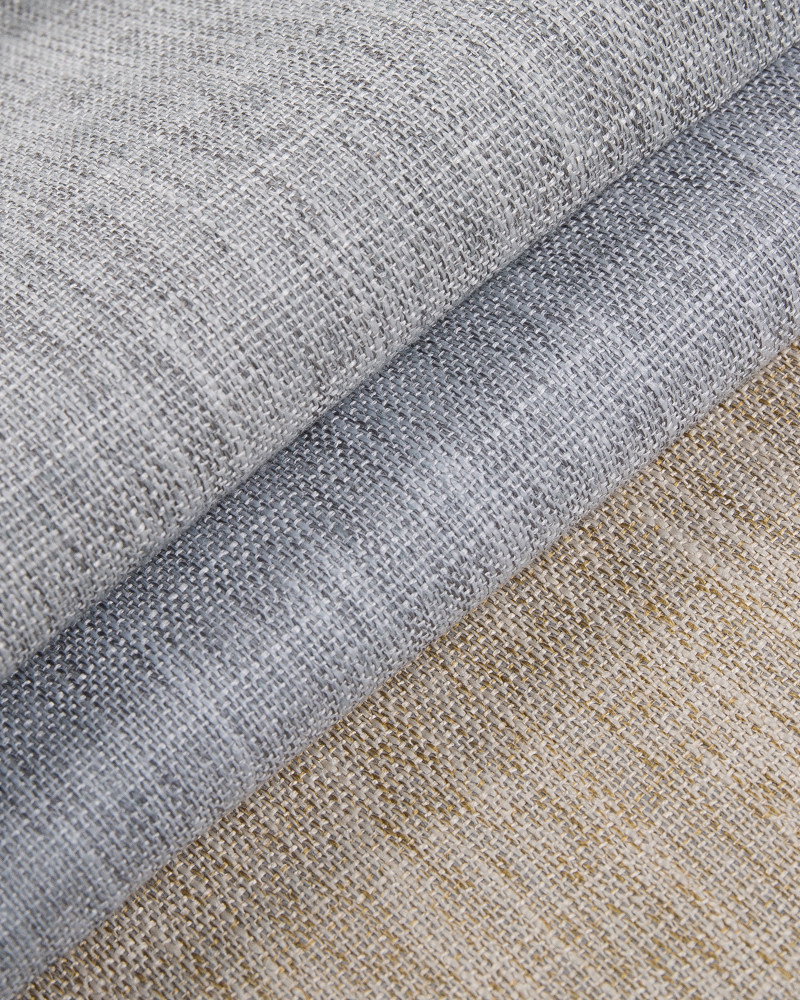
Combining cotton and linen curtains with window screens can maintain beauty while improving privacy protection. Here are some practical tips and suggestions:
1. Layers and positions of window screens
Outer cotton and linen curtains + inner window screens: This combination ensures indoor privacy while allowing natural light to enter through the window screens. The heavy texture of the cotton and linen curtains can provide the necessary privacy protection, while the window screens help to maintain soft light and prevent outsiders from peeping.
Window screens as the main light-transmitting layer: In some rooms with high privacy requirements (such as bedrooms or bathrooms), window screens can be used as the outer layer, and cotton and linen curtains as the inner layer to increase privacy protection and shading effects. The transparency of the window screen can maintain the brightness of the room during the day, while the cotton and linen curtains can block the view from the outside world.
2. Choose the right type of window screen
Translucent window screens: This type of window screen can provide basic privacy protection without completely blocking the sun, keeping the room bright. Suitable for daytime use and will not affect the view of the outdoor landscape.
Textured screens: Choosing screens with subtle textures or patterns can enhance the beauty of the curtains and improve privacy protection. This can make the screens more decorative and difficult to penetrate from the outside.
Dark screens: If you want to provide stronger privacy protection, choosing darker screens (such as gray, dark beige, etc.) can also help. Dark screens are usually more difficult to see through from the outside and provide better privacy.
3. Color matching of curtains and screens
Same color matching: Cotton and linen curtains and screens use the same color or similar tones to make the overall window decoration look more harmonious and unified. For example, cotton and linen curtains use beige or light gray, and screens can choose similar colors to avoid color conflicts and maintain visual balance.
Contrasting color matching: If you like a more contrasting effect, you can choose a larger color difference between cotton and linen curtains and screens, such as dark curtains with light screens. This combination will make the window the focus of the room and increase the sense of design.
4. Material selection of window screens
Light and breathable window screens: The material of window screens should be light and breathable fabrics, such as polyester fibers or yarns, which can enhance the effect of indoor air circulation and make it more difficult for outside vision to penetrate. Light window screens can echo the natural texture of cotton and linen curtains, and the overall effect is softer.
Window screens with anti-UV function: If the window faces the direction of strong sunlight, choose window screens with anti-UV function to protect the furniture and floor in the room from being damaged by ultraviolet rays without sacrificing light transmittance.
5. Matching curtain length with window screens
Slightly longer cotton and linen curtains: In order to improve the privacy protection effect, you can choose to make the cotton and linen curtains slightly longer and cover the windowsill or the ground. In this way, even if the window screen is slightly translucent, the cotton and linen curtains can effectively prevent the outside vision from entering.
Slightly shorter window screens: If you want the window screen not to completely block the outside view, you can choose a slightly shorter length of window screens, covering only the upper half of the window. This design can allow sunlight to enter through the lower half of the curtains while maintaining privacy, enhancing the sense of light in the room.
6. Arrangement of curtains and window screens
Double-layer design: Some curtain track systems allow the use of double-layer curtains, where cotton and linen curtains and window screens are hung on different tracks for easy daily adjustment. During the day, window screens can be used to increase the brightness and privacy protection in the room, and at night, cotton and linen curtains can be pulled up for light blocking and further privacy protection.
Folding curtains: Choosing curtains with folding designs can not only maintain the layering effect of curtains and window screens, but also adjust the degree of light blocking and light transmission as needed. This method can make the combination of cotton and linen curtains and window screens more flexible and practical.
7. Balance between light transmission and privacy
Blackout cotton and linen curtains: If privacy protection is the most important consideration, you can choose blackout cotton and linen curtains. Usually, they add some non-transparent polyester components to the fabric, so that they can effectively block the invasion of outside vision even at night or during the day, and provide softer natural light with window screens.
Natural light blocking effect: If you do not want to use completely blackout curtains, choosing cotton and linen fabrics with moderate thickness can also provide appropriate privacy protection without completely blocking the entry of natural light. When used with window screens, the overall effect is softer and more comfortable.
By properly matching cotton and linen curtains with window screens, you can ensure privacy protection while keeping the indoor light soft, meeting the needs of different scenarios. This combination can not only improve the beauty of the windows, but also enhance the layering and comfort of the overall interior design.